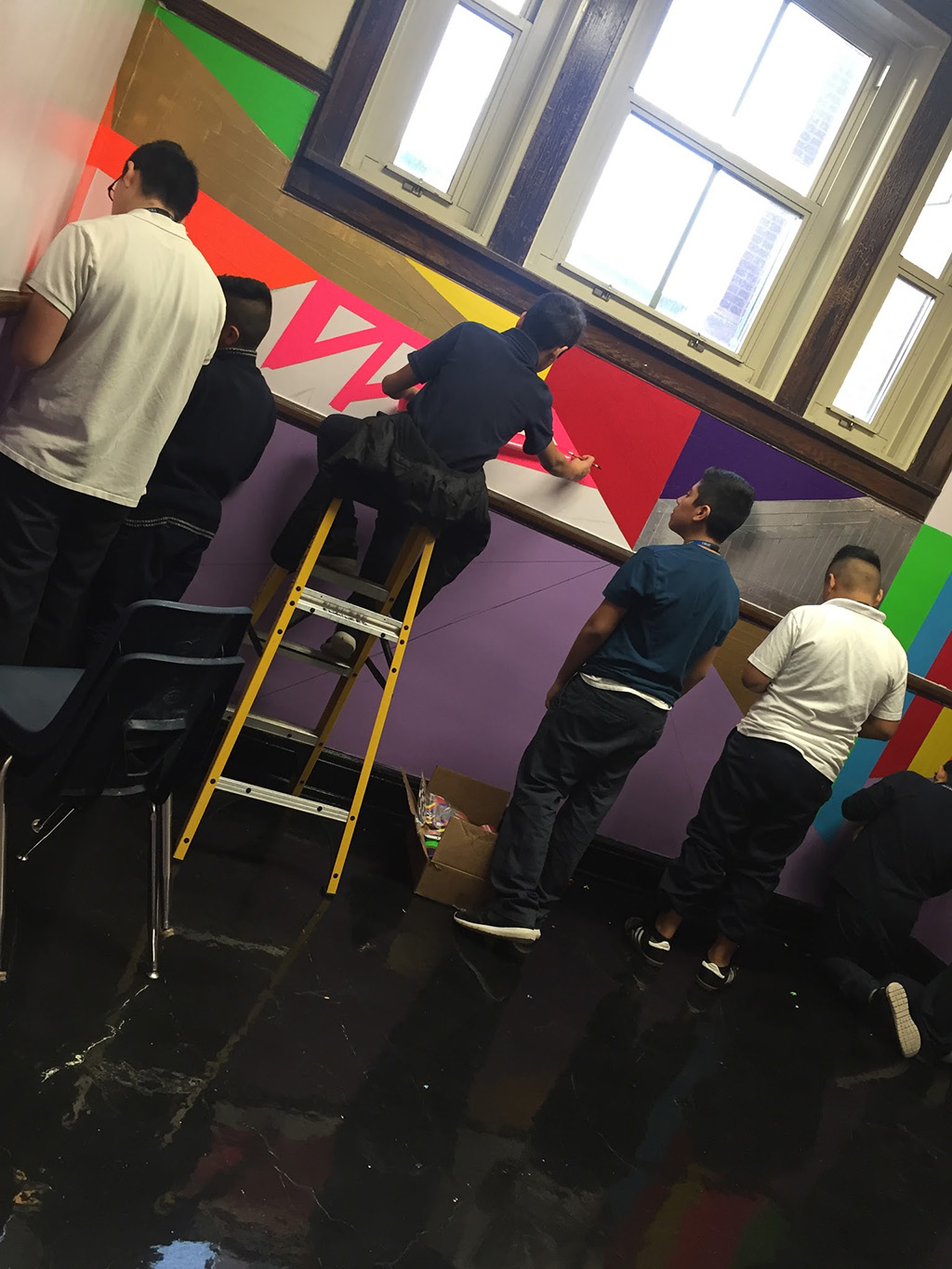Inside Out Outside In
By Mauricio and Emily Pineda
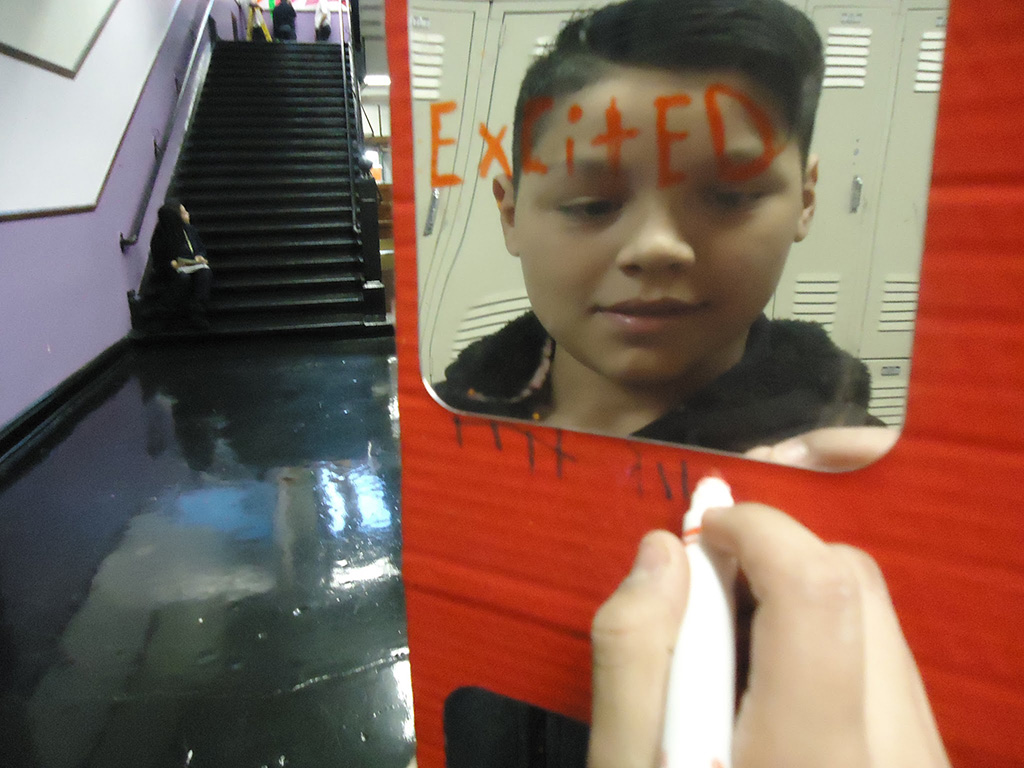
Students explore social issues within our community via artistic interpretations and interventions for positive change.

Goals and Objectives
In this project students become proactive agents of change in their communities. Students are challenged to become neighborhood activists and engage their community by responding to its problems, rather than feeling powerless as events unfold around them. Students use past personal experiences and shared stories as a tool for processing and analyzing their ideas. Students will channel contemporary artistic practices to create visual and/or performance art pieces after participating in a neighborhood walk, talking circles, and/or restorative practices.
Guiding Questions
- How do we use art to effect change or take action in our community?
- How have events in your neighborhood impacted you and your development negatively and/or positively?
- How can art be used as a tool for awareness, change, reflection, conversation, dialog, celebration, unification, or denouncement?
- As artists, what decisions can we make about how to portray our work? What is most important? What creates the biggest impact?
- How can contemporary art help us connect to our community?
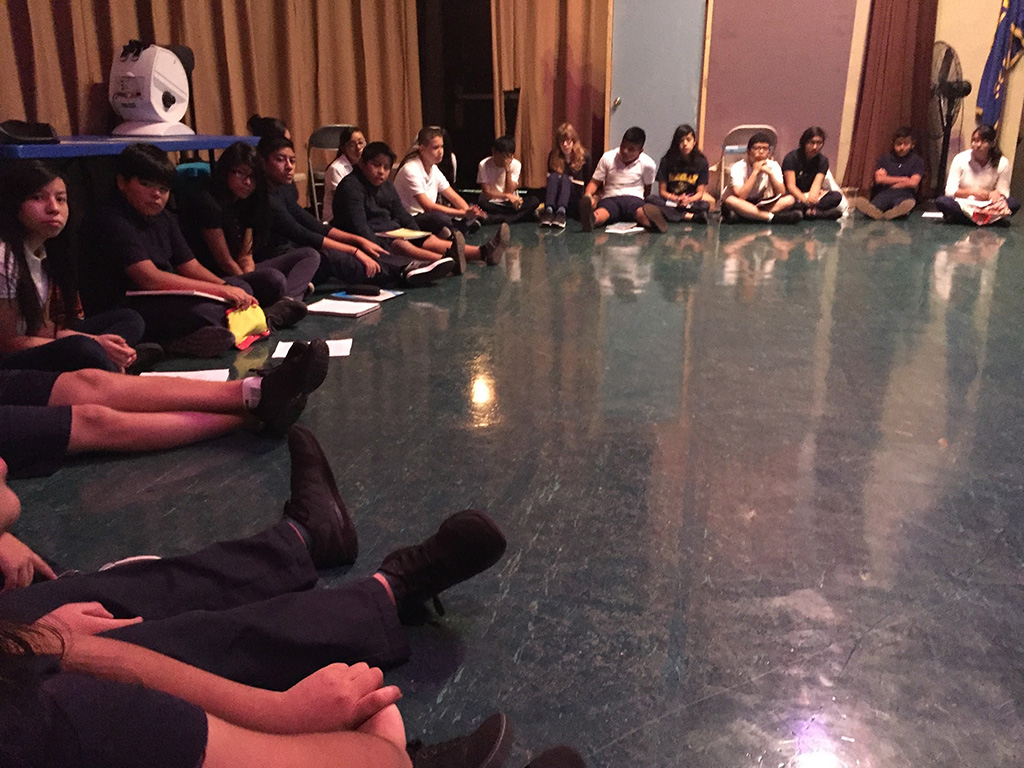
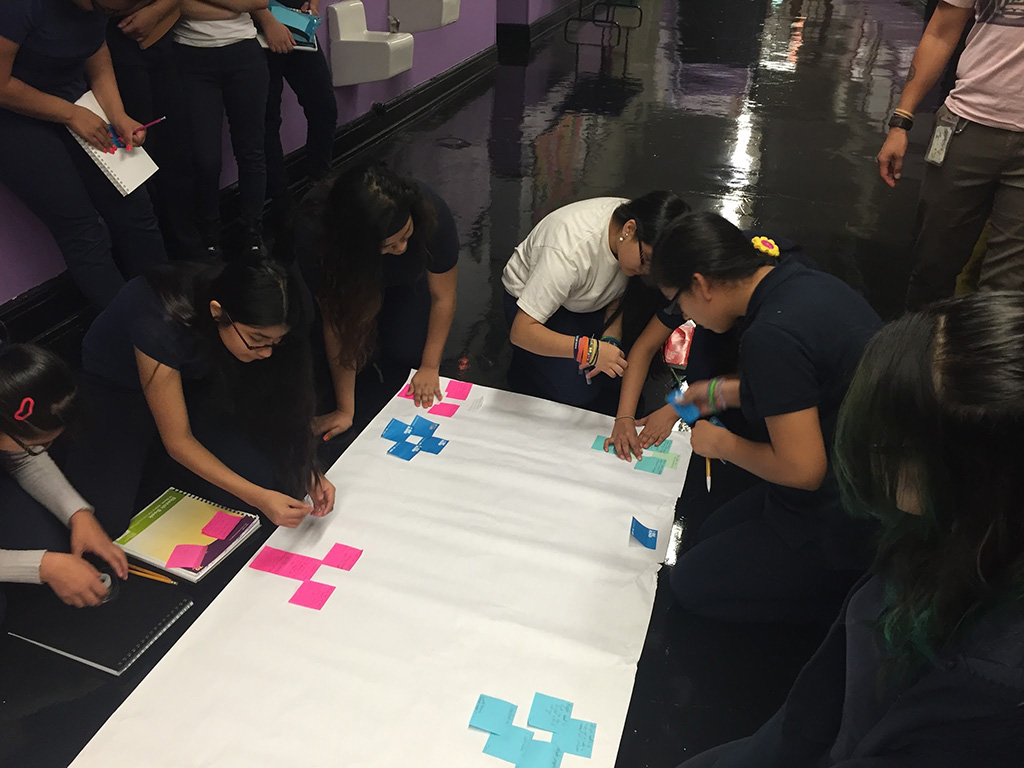
Documentation + Assessment
Students documented their process through photographs, reflections, and group assessments. Throughout the project, students were interviewed and filmed to describe their process and intended outcomes.
Students worked independently as well as in groups to continuously reflect on the progress of their project: How are we going to reach the community with this message? What is the message we are trying to send? How can this project help our community be more reflective or bring about change? This reflection happened through small-group and whole-group discussion—both in the creation of visual art pieces as well as movement—and was recorded on video in most cases.
Timeframe + Learning Activities
Timeframe
October 2015-March 2016 (6 months)
Learning Activities
Inspired by the AfriCOBRA movement, we held the following workshops:
Experimentation Workshops in visual art (materials, techniques, surfaces, objects, and textures) and performing art (music, movement, tableaux, body shapes, and use of space). Examples of various workshops in each art form are below.
Visual Art:
Students are presented with different kinds of materials to create collaborative pieces. There were eight different stations with different materials at each station. I played different rhythms of music to help evoke different sensations and feelings so that students would investigate their own reactions to those stimuli. Students were not given instructions about how each of the materials worked. They were encouraged to follow their instincts in order to discover a way to use the materials to communicate or express what they were experiencing. They were given 5 to 10 minutes at each station and had to exchange their pieces in every transition. This helps them disassociate themselves from the final product and focus on experimenting and experiencing the process. Sometimes students were invited to work with eyes closed and most of the time their work was done silently. The materials used in each station were: paint, oil pastels, ink, sharpies, tape, tissue paper, yarn, glue, and cardboard.
Performing Arts:
- Musical storytelling: Using an instrumental piece of music, students work in groups to create and tell a story through pantomime that reflects the nature of the music.
- Thematic tableaux: Groups of students create frozen pictures depicting the root cause of a given theme and a community problem identified by the students.
- Movement/choreography: Working with ideas that students generated in small groups, choreography becomes an ensemble effort. The teacher creates some movement based on student ideas and pieces together ideas and movement created by students to create a cohesive ensemble piece with a unified message.
Improvisation Workshops in visual art (art with things that aren’t “art”—dirt, shoelaces, etc.) and performing arts (improvisational games, “machine” creation, etc.). Workshop examples are listed below:
Visual Art:
- Students had a conversation about what art is and questioned whether it is dependent on the exclusive use of art materials.
- We all went outside the art room and students were given the words: community, peace, balance, hope, violence, intolerance, disrespect, loneliness, and frustration. These words were chosen by students after having a discussion about how they feel about their community.
- Students were directed to represent these words with their bodies.
- Students were directed to represent these words with any object they could find.
- Afterwards, we debriefed together and shared our experiences. We also talked about how or why things become meaningful. We asked “What is art?”
Performing Arts:
- Party Quirks Game: This improv game takes four volunteer guests and one “host.” The host leaves the room while the ensemble decides on various “quirks” for each of the four volunteer party guests (i.e. superhero, someone has a crush on the host, has the flu, a dinosaur … ). When the host re-enters the room, he/she has to guess what quirk each of the guests is exhibiting.
Machines: In groups, students create machines (real or imagined) by “attaching” themselves to one another—each person creates a sound and movement to express his/her part of the machine. The ensemble tries to guess what machine is being created. - Collectivity: Neighborhood walk prep (annotated map, idea generation), followed by a neighborhood walk. Students bring a map to jot down ideas about how they view their community, as well as memories and experiences that are generated through the walk. A talking circle takes place to debrief about their experiences during the class period after the walk.
- Talking circles to debrief about findings in the community; how to proceed—grouping or individualized circles: Questions: How did you feel walking around? What is this neighborhood to you? Did you think of anything in particular? What should be different and why? How can art help?
- Creation Lab: Students develop and execute projects.
Two Field Trips to the MCA (one for visual artists, the other for performing artists): October 6 and December 10
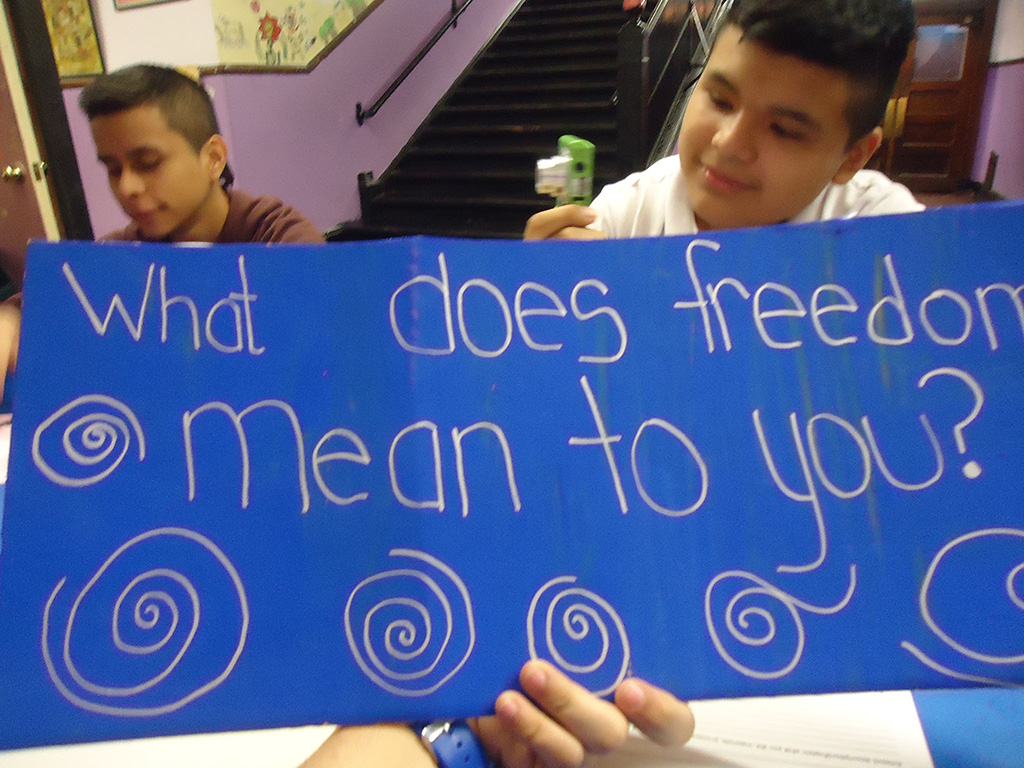
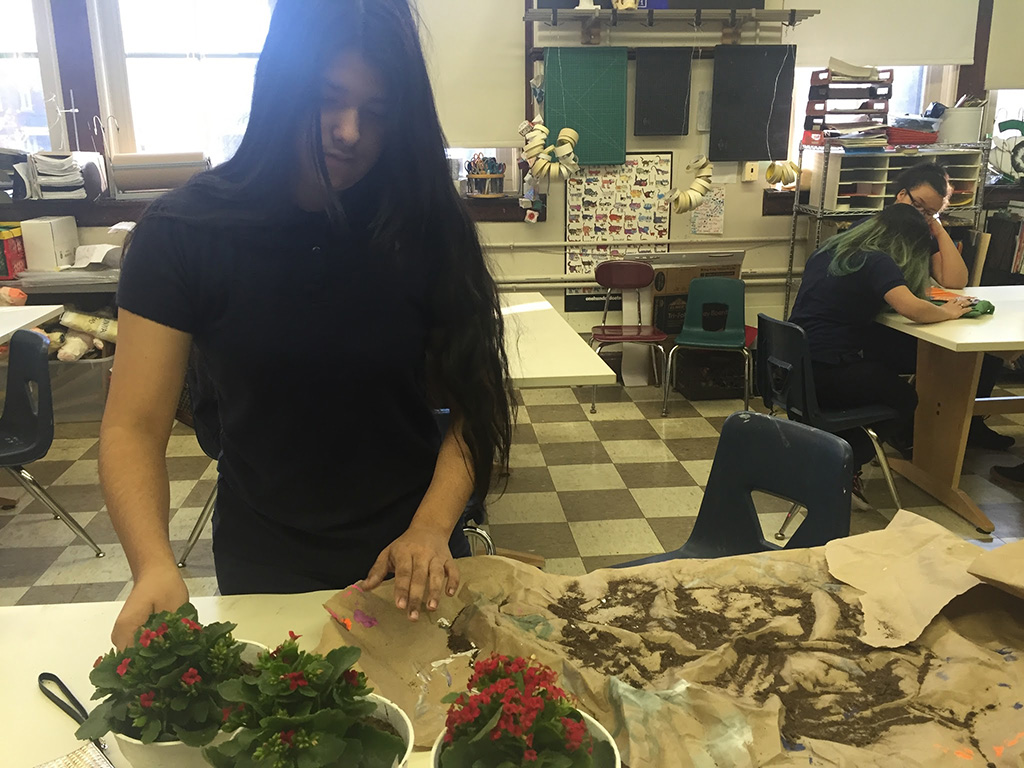

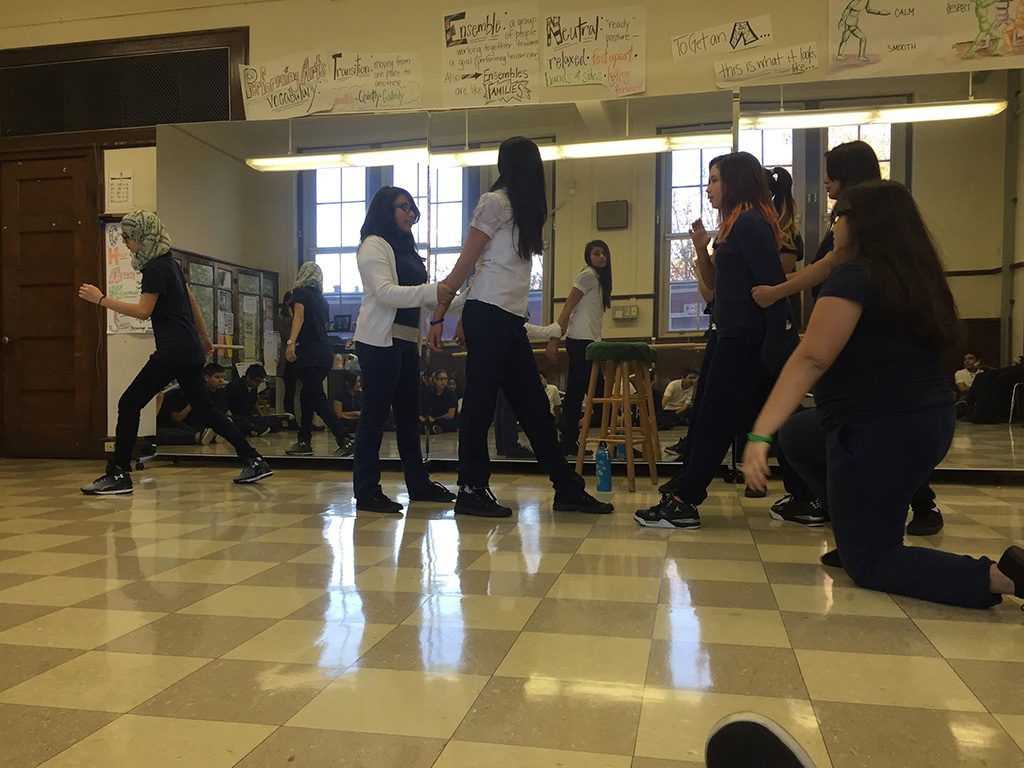
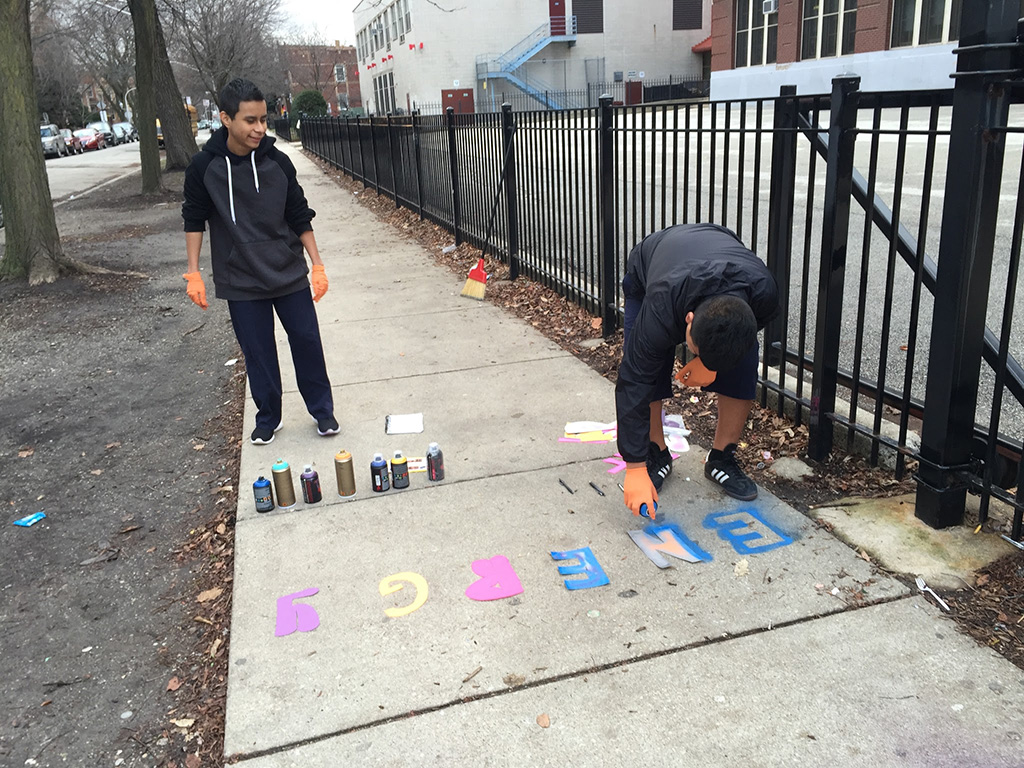
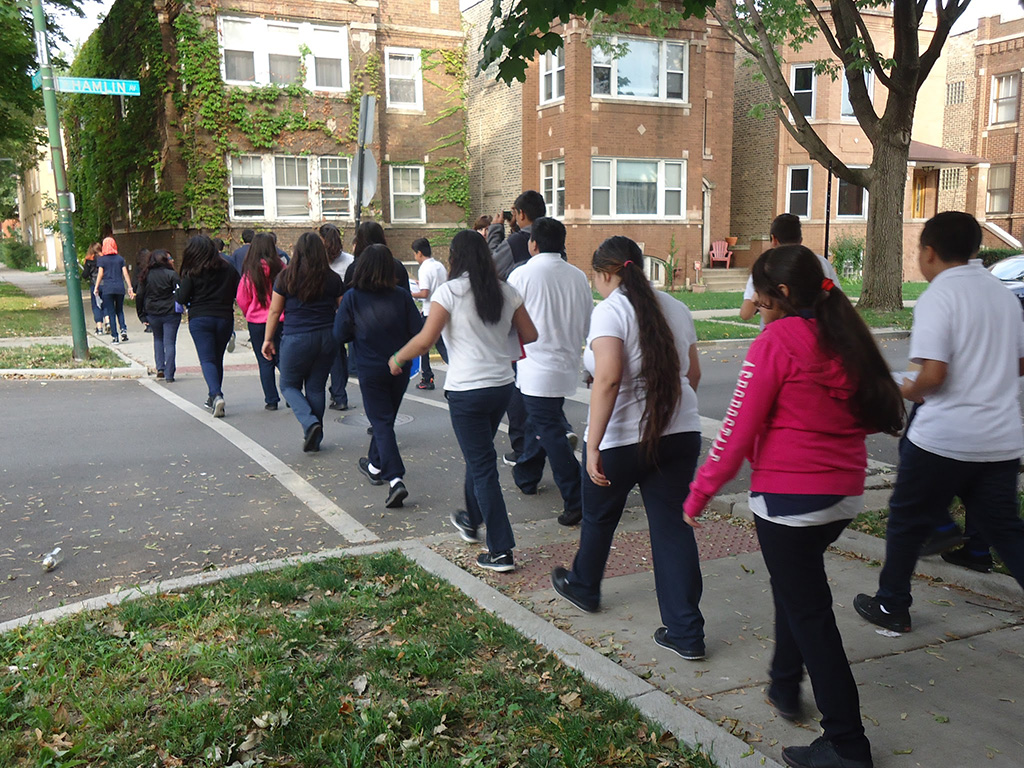
Materials
- Audiovisual equipment
- Plaster
- Paint
- Cardboard
- Spray-paint
- Acrylic Paint
- Wood
- Wire
- Plants
- Pods
- Soil
- Mirror panels
- Foam board
- Duct tape
- Glass
- Balloons
- Index cards
MCA Connections
Inspired by the AfriCOBRA movement exhibit that we visited with our classes, we planned our process around their guiding principles of experimentation, improvisation, and collectivity.
Additionally, the students drew on resources and inspiration from their field trips to the MCA and ensuing discussions around the meaning of contemporary art and its role in the community.
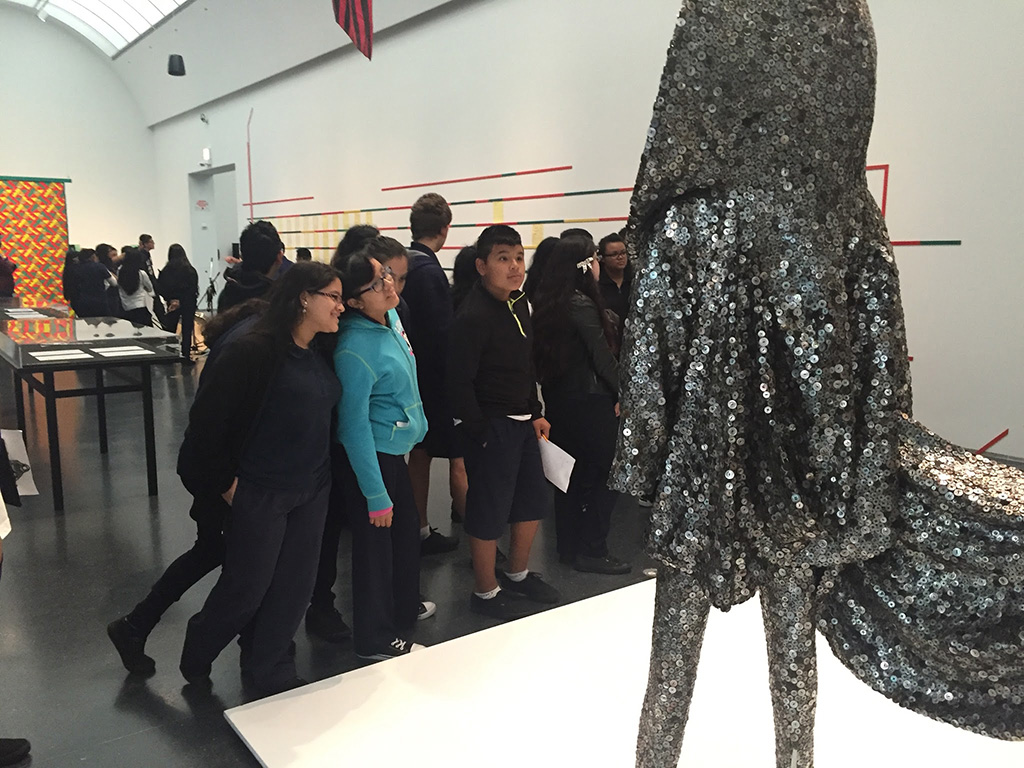
Mauricio and Emily Pineda
Reilly Elementary School
Mauricio Pineda has taught art in Chicago Public Schools for 4 years, and in his native Ecuador for 3 years as well. He is also an Adjunct Professor at DePaul in the Peace, Justice, and Conflict Studies department, where he teaches two courses related to art, community action, and introspection. Mauricio is the head of Restorative Practices at Reilly school, has presented to Chicago’s Mayor, as well as to many groups of CPS teachers. Mauricio has also presented to other art teachers at the Museum of Contemporary Art.
Emily Pineda has been an educator with Chicago Public Schools for over ten years, both in the general classroom, teaching 3rd, 4th, 5th, 7th and 8th grades, and for the last three years as a Performing Arts teacher. Currently teaching at Reilly Elementary in Avondale for the last two years, she formerly taught at Hayt Elementary in Edgewater for ten years. She holds a B.A. in Fine Arts and has been a teaching artist/director for Raven Theatre’s Take Flight youth summer programs. Emily also taught dance classes (ballet, tap, jazz, contemporary) in multiple studio settings, and has served as director for the CPS All-City Dance Ensemble at both regional and citywide levels over the last three years. Emily currently teaches classical ballet classes after school at Reilly, co-directs the school’s drama club, choreographs and directs the school’s flash mob, and also works to facilitate peace circles school-wide through her dedicated work with Restorative Practices. In her spare time, she adventures with her 22-month-old daughter Zola and husband, Mauricio, and awaits the arrival of a son in May 2016.
Mauricio and Emily reflect on their process:
This project addresses current happenings in the world around our students. We drew on other contemporary artists’ work to connect students to their processes, techniques, and basis for their works. Because of the experimental nature of the project, students were challenged beyond the literal and representational forms of artwork and developed pieces that are emblematic of their experiences, in order to engage with their community to then generate discussion, analysis, and awareness. Students were always the center of our project from the conception to execution of the final pieces. In our role as facilitators, we created spaces for dialogue, creative experimentation, and investigation, and supported and challenged their decisions to achieve deep and meaningful messages.
Students, on the other hand, were the ones who chose the themes of their work, did research on artists—of their preference—for inspiration, and also chose the materials, objects, movement, music, etc., that they felt would best represent the concepts they were creating. Additionally, they were also in charge of documenting their work, giving feedback to each other, and contacting other teachers and students in order to visit their classrooms, interview them, and have them participate in their pieces. At first, it was challenging to have very young students thinking about movement in terms of non-literal representation. It was difficult for some students to be confident in their ideas and connections to the community. Addressing it was a matter of creating focused examples together to build confidence, then working together to build the movement collaboratively. It was very powerful when students realized that they have a big responsibility ahead of them as artists, and especially as community members. The students saw themselves as artists instead of students and realized that there are many ways, each very personal, to do art. In the end the students were able to see the culmination of their process come together in a meaningful group piece.
